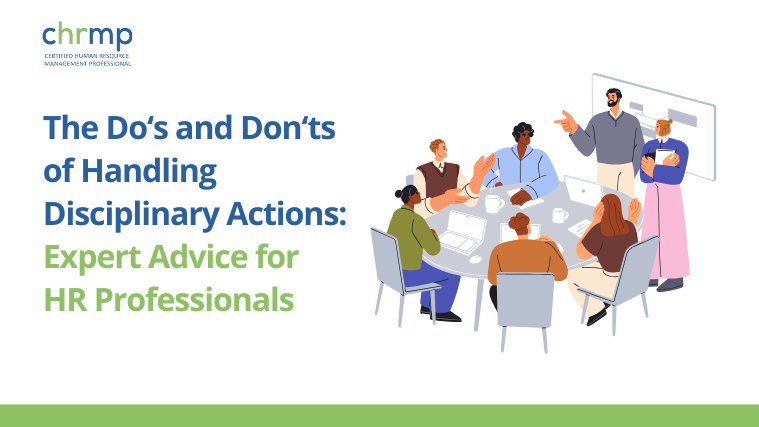Introduction: The HR Dilemma
Imagine you’re faced with a scenario where a top-performing employee has repeatedly violated company policy. This situation poses a significant challenge: how do you address this behavior without compromising team morale or setting a precedent that might undermine your company’s values? Through this blog Disciplinary Action, you’ll uncover expert strategies for handling disciplinary actions with finesse, ensuring your workplace remains both supportive and fair.
This delicate balance of implementing disciplinary action while maintaining a positive workplace culture is a challenge many HR professionals encounter.
Understanding Disciplinary Actions:
At its foundation, disciplinary action in the workplace is a process used by an organization to address and manage employee misconduct or performance issues. It’s a structured approach that aims not just to penalize but to correct and guide toward better behavior, ensuring alignment with the company’s values and standards.
Disciplinary actions can vary greatly, depending on the nature and severity of the issue at hand. Here’s a breakdown of the common types of disciplinary actions:
-
Verbal Warning:
This is often the first step in the disciplinary process. It’s a formal conversation between the employee and their manager or HR representative, where the misconduct or performance issue is discussed, and the employee is informed of the need for improvement. While less formal, it should still be documented.
-
Written Warning:
If the behavior doesn’t improve or for more serious offenses, a written warning is issued. This document provides a clear and detailed account of the problem, the improvement needed, and the consequences of failing to change. It serves as an official record that can support further actions if necessary.
-
Suspension:
In cases of severe misconduct or as a step before possible termination, an employee may be suspended, either with or without pay. This action is often used to allow time for a thorough investigation or as a disciplinary measure in itself.
-
Termination:
The most severe form of disciplinary action is termination of employment. This step is taken when the severity of the issue warrants removal from the company or when previous disciplinary measures have failed to correct the behavior.
Disciplinary actions are not just procedural necessities; they are vital tools for upholding standards and fostering a respectful, productive work environment. However, the approach must be nuanced, balancing fairness and sensitivity to preserve employee morale and trust. By implementing the strategies provided, you will gain insights into effective practices and pitfalls to avoid when managing disciplinary actions.
The Do’s of Handling Disciplinary Actions:
- Conduct a Fair Investigation: Before deciding on a disciplinary action, it’s imperative to conduct a fair and thorough investigation. For example, if an organization finds itself dealing with a case of harassment, it must gather all relevant facts and testimonies before making a decision. This approach not only ensures fairness but also protects the company from potential legal repercussions.
- Maintain Clear Communication: Clear and respectful communication is crucial throughout the disciplinary process. This means informing the employee of the issue, the investigation’s findings, and the rationale behind the disciplinary action. An organization should aim to keep these conversations private and professional, focusing on the behavior, not the individual.
For instance, an employee must be informed of the allegations in clear terms before the beginning of the investigation.
- Document Every Step: From the initial complaint to the conclusion of the disciplinary process, documentation is key. This could include emails, meeting notes, and formal reports. In a situation where disciplinary action leads to termination, this documentation can be vital in defending the decision if challenged legally. For example, an employee repeatedly violates the company dress code, and HR decides to take disciplinary action. Each instance of the violation is logged with the date, the specific nature of the violation, and any verbal warnings given. When a formal written warning is issued, HR includes references to these logs, detailing the dates and nature of prior warnings, ensuring there is a clear record of the progressive disciplinary steps taken.
- Ensure Consistency: To avoid claims of unfair treatment, disciplinary actions must be consistent across the organization. For instance, if two employees commit a similar infraction, they should receive comparable disciplinary measures. This consistency upholds the integrity of the company’s policies and the trust of its employees.
- Adopt a Supportive Approach: Whenever possible, use disciplinary actions as an opportunity for growth. For example, if an employee is disciplined for poor performance, an organization might offer coaching or training as part of the disciplinary process. This not only helps the employee improve but also demonstrates the company’s commitment to its workforce’s development.
Also Check: Navigating Sabbatical Leaves: A Comprehensive Guide for HR Professionals
The Don’ts of Handling Disciplinary Actions:
- Avoid Immediate Reactions: It’s important not to act hastily. Take the time to review all aspects of the situation before deciding on a course of action. For example, upon discovering an employee posting sensitive company information on social media, the HR manager resists the urge to immediately confront or discipline the employee. Instead, they plan a meeting to discuss the matter after gathering all necessary information and consulting with legal, ensuring a measured and informed approach.
- Avoid Breach of Confidentiality: Disciplinary discussions and actions should remain confidential to protect the privacy of all involved and maintain workplace morale. Publicizing such matters can create a culture of mistrust and fear. For example, during a disciplinary investigation, HR keeps the details confidential, only discussing the case with those directly involved. Even within the HR team, information is shared on a need-to-know basis to protect the privacy of all parties and maintain the integrity of the investigation.
- Avoid Bias: Ensure that decisions are made based on behavior and facts, not personal feelings or relationships. This impartiality is crucial for fairness and legality. For example, an HR professional finds themselves handling a disciplinary case involving a close colleague. Recognizing the potential for bias, they delegate the case to another HR team member to ensure the process remains impartial and fair.
- Avoid Skipping Established Procedure: Skipping steps in the disciplinary process can lead to accusations of unfair treatment and legal vulnerabilities. Even in clear-cut cases, adhering to the established procedure demonstrates the organization’s commitment to fairness and due process. For example, an employee is caught stealing office supplies for the first time. Instead of jumping to termination, HR follows the established procedure, starting with a formal verbal warning and a meeting to discuss the seriousness of the actions and the consequences of future offenses.
- Avoid Ignoring Employee Rights: Be mindful of the employee’s legal rights throughout the disciplinary process. This includes the right to be heard and, in some jurisdictions, the right to representation. Ignoring these rights can lead to significant legal and reputational damage. For example, an employee facing disciplinary action for misconduct requests a representative be present during their disciplinary hearings. Respecting the employee’s rights, HR agrees and schedules the meetings accordingly, ensuring the employee feels supported and that the process is fair.
Also Check: Top 9 Differences Between an Employee and Employer: A Comprehensive Guide
Legal Considerations and Impact on Organizational Culture
When disciplinary measures align with legal requirements, they reduce the likelihood of expensive legal disputes while reinforcing the organization’s reputation as an equitable employer.
Likewise, the effect of disciplinary actions on an organization’s culture is significant. Disciplinary procedures that are both transparent and fair not only address specific problems but also strongly affirm the company’s ethical standards.
Take, for instance, a technology firm that was accused of discriminatory practices in its disciplinary actions. The company seized this as a chance to revamp its policies, making every step of the process clear and ensuring decisions were communicated thoughtfully and transparently. This approach not only restored trust but also transformed a potential crisis into evidence of the company’s dedication to equity and respect.
Best Practices for HR Professionals
To make handling disciplinary actions more effective and culturally sensitive, HR professionals can adopt these refined practices:
- Educate Your Team with Real-Life Scenarios: Use real-life examples to train managers on handling disciplinary issues. For instance, role-playing exercises based on actual workplace scenarios can prepare managers for sensitive conversations, making them more adept at navigating the nuances of disciplinary actions.
- Promote a Positive Workplace Culture through Open Dialogue: Foster an environment where feedback is part of the daily routine, not just when issues arise. For example, a leading retail company implemented regular “feedback forums,” encouraging open dialogue between teams and their leaders. This not only helped in identifying potential issues before they escalated but also made disciplinary actions less daunting for everyone involved.
- Leverage Technology to Stay Informed: Utilize HR software and legal databases to keep track of changes in employment law and HR best practices. Regularly attending webinars, participating in forums, and subscribing to HR newsletters are also excellent ways to stay informed. For instance, leveraging platforms like LinkedIn Learning for courses on employment law can significantly enhance your understanding and application of legal and ethical disciplinary procedures.
- Implement Restorative Practices: When possible, incorporate restorative justice principles into your disciplinary approach. This involves focusing on the repair of harm and the restoration of relationships rather than just punishment. A manufacturing company successfully used restorative circles to address a case of workplace bullying, resulting in a more cohesive team dynamic and a reduction in similar incidents.
Conclusion: Handling Disciplinary Actions
Implementing disciplinary actions with fairness, consistency, and a focus on improvement can significantly contribute to a positive workplace environment. By adhering to the do’s and don’ts outlined above, HR professionals can navigate disciplinary issues effectively, ensuring both organizational integrity and employee growth.
This guide serves as a roadmap for managing disciplinary action, providing HR professionals with the knowledge to handle disciplinary issues with confidence. Embrace these practices, and you’ll not only address current challenges but also lay the foundation for a respectful and productive workplace culture.
In navigating the intricacies of disciplinary actions, remember: that the goal is not just to correct behavior but to foster an environment where every employee has the opportunity to thrive.



